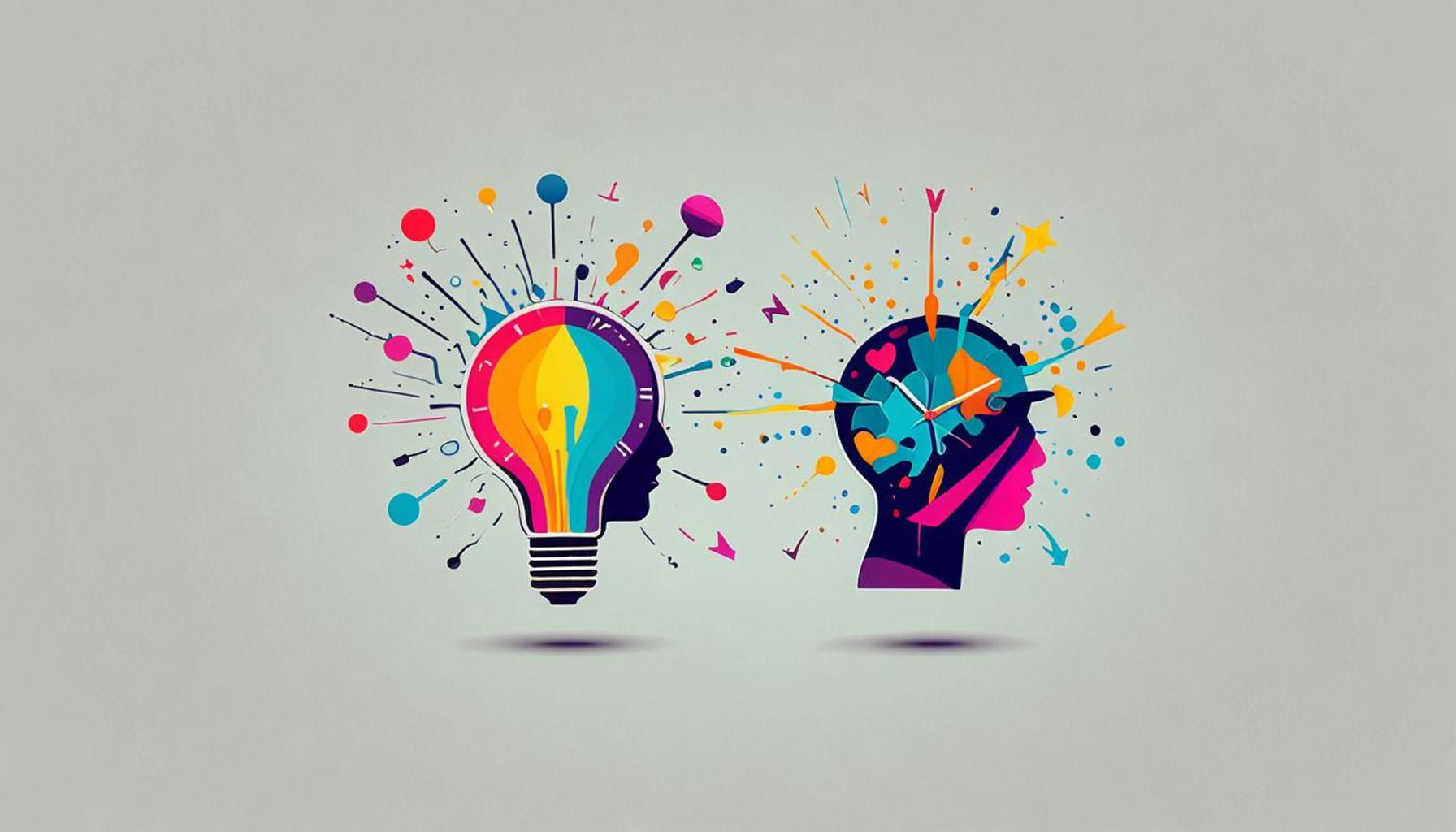Developing a Minimalist Mindset to Eliminate Procrastination and Maximize Time

Embrace Simplicity for Productivity
The fast-paced world we live in often leads to overwhelming choices and distractions, fostering a cycle of procrastination. To combat this, cultivating a minimalist mindset can serve as a powerful antidote. By stripping away the non-essential, you can reclaim your time and maximize productivity. Living in a society riddled with constant notifications and incessant demands often leaves individuals feeling stretched thin. However, adopting a minimalist approach can guide you toward focusing on what truly matters, allowing for both personal and professional growth.
Why Minimalism Matters
Minimalism isn’t just about decluttering your space; it’s a comprehensive approach to simplifying life. Here are key reasons to embrace this mindset:
- Reduces distractions: By eliminating unnecessary clutter, both physical and mental, you can create an environment conducive to concentration. For instance, a clear desk translates to a clearer mind, enabling you to dive deeper into your tasks without the temptation of distractions tugging at your attention.
- Enhances focus: When you focus on fewer priorities, you can devote your energy to the tasks that align with your goals. Research has shown that multitasking can reduce productivity by as much as 40%. Embracing minimalism can help to streamline your efforts and yield better results.
- Promotes clarity in decision-making: With fewer choices to weigh, you can make quicker and more confident decisions. The paradox of choice is prevalent in our daily lives—more options can lead to anxiety and indecision. By minimizing your options, you can enhance your decision-making abilities.
Steps to Develop a Minimalist Mindset
Transitioning to minimalism requires conscious effort and dedication. Here are some steps to effectively minimize procrastination:
- Identify and eliminate distractions: Start by tracking your daily activities. Notice what pulls your attention away—be it social media, unnecessary meetings, or a cluttered workspace. Once identified, take intentional steps to limit these distractions. For example, consider designating specific times for checking emails and avoid constant notifications.
- Prioritize tasks based on value and urgency: Utilize tools like the Eisenhower Matrix to distinguish between urgent and important tasks. This approach allows you to allocate your time to activities that yield the most significant impact, paving the way for substantial progress.
- Set clear goals for daily productivity: Establishing achievable and clear goals can set the tone for your day. Utilize the SMART criteria (Specific, Measurable, Achievable, Relevant, Time-bound) to create goals that not only motivate but also guide your actions toward completion.
By implementing these strategies, you can pave the way for enhanced efficiency and a more fulfilling daily routine. The journey to minimalism is a personal one, and by gradually adopting this mindset, you can experience a profound transformation in your approach to time management and productivity. The world may be bustling with distractions, but with a minimalist framework, you can find your focus and harness it—leading to a more productive and balanced life.
DISCOVER MORE: Click here for insights on visual organization

Transform Your Environment for Greater Efficiency
The foundation of a minimalist mindset begins with your environment. A streamlined space not only appeals aesthetically but also cultivates a sense of calmness that is essential for productivity. Numerous studies have shown that a cluttered workspace can lead to increased stress levels and hinder focus. According to the American Psychological Association, individuals often feel more in control and more productive when their surroundings are organized and tidy. Thus, the journey to eliminating procrastination starts with transforming your environment.
Decluttering Your Space: The First Step
Decluttering goes beyond just clearing your physical desk. It involves assessing every aspect of your environment, from digital files on your computer to the items on your bookshelf. Here’s how you can get started with effective decluttering:
- Set aside dedicated time: Just like you would schedule a meeting, allocate a specific time for decluttering. Whether it’s an hour each week or a full day, having a set time to focus on this task will ensure it gets done.
- Adopt the ‘one in, one out’ rule: To maintain a minimalist environment, maintain the balance by ensuring that for every new item you acquire, an old one must go. This prevents unnecessary accumulation and forces you to consider the value of your possessions.
- Start small: If the task feels daunting, begin with a single drawer or section of your workspace. Completing smaller tasks will provide a sense of accomplishment and motivate you to tackle larger areas.
The benefits of a decluttered environment extend beyond mere aesthetics. A clean and organized space can lead to greater mental clarity, which directly impacts your ability to focus on tasks and meet deadlines. The connection is clear: clarity leads to productivity.
Streamlining Your Digital Life
In today’s digital age, minimalism also applies to your online experiences. The influx of emails, social media notifications, and countless digital distractions can easily compound procrastination. Consider these steps to simplify your digital environment:
- Unsubscribe and filter: Take the time to unsubscribe from emails that no longer serve you. Create filters that direct important messages to specific folders, allowing you to focus on priorities without the distraction of a crowded inbox.
- Limit social media usage: Set implementation protocols for social media, such as scheduled times for checking notifications or using app blockers during work hours to preserve your focus.
- Utilize productivity apps: Leverage technology by using apps designed for productivity, such as task managers or time trackers. These tools can help you prioritize your workload, keeping procrastination at bay.
By actively streamlining your digital environment, you can significantly reduce the chances of distractions pulling you away from your critical tasks. As you adapt a minimalist mindset, remember that your surroundings play a pivotal role in shaping your productivity. Embrace simplicity, both physically and digitally, to create a conducive environment for maximizing your time and efforts.
Understanding Minimalism and Its Impact on Time Management
Developing a minimalist mindset involves more than just decluttering physical spaces; it encompasses shedding unnecessary mental load, including distractions and time-wasting habits. Embracing minimalism allows individuals to focus on what truly matters, thus eliminating procrastination and enhancing productivity. By prioritizing tasks and commitments, one can significantly reduce the overwhelm that often leads to procrastination.In this context, a minimalist approach encourages individuals to ask themselves piercing questions like, “What is the essential outcome I desire?” and “What tasks genuinely align with my goals?” Such queries help streamline focus toward high-value activities and away from entrapments of busywork. Through this clarity, people can maximize their time and energy, directing resources where they yield the highest returns.To effectively implement this minimalist mindset, consider establishing core principles. Start by defining clear, actionable goals—whether short-term or long-term—and intentionally eliminate distractions that detract from those goals. This could mean setting specific times for work and sticking to them without interruption. Moreover, it extends to digital minimalism, where curating online environments free of excess information can lead to better concentration and efficiency.Strengthening these habits over time can lead to a powerful shift in how time is perceived and utilized. For many, the awareness of time becomes improved, allowing for a more fulfilling and less stressful daily life. Ultimately, a minimalist mindset not only maximizes time but creates a profound sense of empowerment and agency over one’s choices.
| Advantages | Descriptions |
|---|---|
| Increased Focus | A minimalist mindset helps sharpen attention, reducing distractions that lead to procrastination. |
| Reduced Stress | By simplifying tasks and commitments, individuals often experience lower anxiety levels, leading to better overall mental health. |
Adopting a minimalist mindset is a transformative journey that, while requiring effort, promises substantial rewards. Through focused application and continual refinement of these practices, anyone can learn to maximize their precious time, thus breaking free from the cycle of procrastination and achieving their most important goals.
DISCOVER MORE: Click here for expert tips on small space organization
Adopting a Minimalist Approach to Time Management
While creating a streamlined physical and digital environment is essential, the heart of a minimalist mindset lies in how we manage our time. The more efficiently we can allocate our time, the more control we gain over our days, effectively eliminating procrastination. A minimalist approach to time management encourages better prioritization, creating focused periods of work that can lead to increased productivity.
Identifying Core Priorities
The first step in managing time effectively through minimalism is to identify your core priorities. What are the essential tasks that align with your personal or professional goals? Start by performing a priority audit, a simple exercise focused on understanding where your time is being spent. Here’s how to do it:
- List your tasks: Write down everything you do in a typical week, from work responsibilities to personal errands.
- Assess significance: Evaluate which tasks contribute most to your long-term objectives and well-being. Highlight those that add genuine value to your life.
- Eliminate the unnecessary: Once you’ve pinpointed your priorities, look for low-impact tasks that can be delegated, postponed, or even eliminated entirely from your schedule.
This critical evaluation fosters a focused mindset that makes it easier to tackle essential tasks without feeling overwhelmed. Understanding what truly matters allows you to invest your time wisely, reducing time wasted on procrastination and inefficiencies.
The Power of Time Blocks
One effective method for practicing minimalist time management is the time blocking technique. This method helps in structuring your day to optimize focus and flow, ultimately quelling procrastination. Here’s how to implement it:
- Set specific blocks: Dedicate fixed periods to different tasks or categories of work. For instance, allocate 9 AM to 11 AM for project work, followed by a break to refresh your mind.
- Limit distractions: During each block, eliminate any potential distractions. Consider using the Pomodoro Technique — 25 minutes of focused work followed by a 5-minute break — to enhance concentration.
- Be flexible: If something urgent demands your attention, adjust your blocks accordingly. The key is to remain committed to your priorities while allowing some flexibility in execution.
By clearly defining your time and establishing focused blocks, you create an intrinsic motivation to stay on track. Importantly, time blocking also alleviates the mental burden of multitasking, which is often a breeding ground for procrastination.
Embracing the Art of Saying No
A minimalist mindset extends beyond decluttering your space and managing time; it also requires the courage to say no to unnecessary commitments. Each “yes” you offer has the potential to dilute your focus and lead to burnout. To embrace this concept:
- Evaluate new commitments: Before agreeing to new tasks or social engagements, assess whether they align with your priorities and goals. Consider if they are worth the time investment.
- Practice assertiveness: Politely decline requests that divert your attention from your core objectives. Remember that saying no can be empowering and allow you to concentrate on what matters most.
- Reflect on your choices: Regularly revisit your commitments and eliminate those not serving your goals. This continuous process of evaluation fosters a focused and productive mindset.
Embracing a minimalist approach to time management not only paves the way for greater productivity but also allows for a profound sense of accomplishment as you successfully navigate your tasks with intention and clarity. Each step toward simplicity is a step away from procrastination, elevating your capacities to maximize your time effectively.
DISCOVER MORE: Click here for effective decluttering tips
Conclusion: Embracing Minimalism for Time Mastery
In our fast-paced world, adopting a minimalist mindset can be transformative in the battle against procrastination and inefficiency. By honing in on our core priorities, we grant ourselves the clarity needed to focus on what truly matters, effectively eliminating distractions and non-essential tasks. The priority audit is a powerful tool that enables us to distinguish between urgent and important, allowing us to align our daily actions with our long-term goals.
Furthermore, by implementing strategies like time blocking, we can create structured periods of concentrated focus that combat the urge to multitask—a common trap that leads to overwhelm and procrastination. This disciplined approach not only enhances productivity but also fosters a sense of accomplishment as we check off significant tasks from our lists.
Importantly, embracing the art of saying no can be a game changer. Each commitment we accept should be weighed carefully to ensure it aligns with our minimalist goals. By liberating ourselves from unnecessary obligations, we can carve out time for crucial endeavors that fuel our passions and professional growth.
Ultimately, cultivating a minimalist mindset is about reclaiming control over our time and lives. As we shift towards simplicity, we find freedom from the chaos of a cluttered schedule and the mental space to thrive. The journey to eliminate procrastination and maximize time is not only about efficiency but also about nurturing a fulfilling and intentional lifestyle. As we adopt these principles, we empower ourselves to live with purpose, making every minute count.


